Will AI Replace UX Writers or Writers in General?
Will AI Replace UX Writers or Writers in General?

In the blockbuster series “Divergent,” the story takes us through a futuristic world in which society is divided into five factions.
Each adult must choose a faction to commit to for life. Tris chooses Dauntless.
However, her initiation reveals she is divergent with multiple qualities of each faction and can never fit into one.
Unless you live under a rock, do not watch TV, or have no access to the Internet, which is less likely, you’d notice that this series, though fictional, models modern-day reality, especially the recent multifaceted buzz around Open AI Chat GPT.
When OpenAI released ChatGPT last year, it was as though Pandora’s box exploded across every Instagram feed, writing forum, Facebook group, and Reddit thread.
Leaving one question on everyone’s mind: Will AI replace writers?
Well, yes and no, depending on which faction you belong to.
- The overzealous: Those who become AI fanatics and lose their originality.
- The “I don’t care”: Those who feel indifferent about AI and never adapt or evolve.
- The divergent: Those who’re multifaceted and embrace AI as an additional tool in their writing stack. This group will thrive in this Fourth Industrial Revolution. As Cal Newport puts it in his book “deep work.”
“Those who will reap the reward and will continue to see massive financial gain are highly skilled individuals who can work creatively and keep pace with rapidly evolving complex machines are the future of the workforce.”
In this article, I’ll share with you how writers can leverage AI copywriting tools upskill and future-proof their content careers, so they quit worrying about AI replacing UX Writers or Copywriters.
First, let’s meet our robot friend.
What is AI?
Artificial intelligence (AI) is the ability of a smart machine to perform tasks that typically require human intelligence.
AI is not a new idea. In fact, it has been around for a while. If you’ve interacted with Siri, Alexa, or other voice-to-speech features, on your smartphone, best believe you’ve been using AI. You’re welcome.
So if AI has been around for a while, what is the reason for the recent uproar? Insert; AI copywriting.
What is AI copywriting?
Artificial intelligence copywriting is a form of writing that uses natural language processing and machine learning algorithms to generate written content, such as ChatGPT.
What is ChatGPT?
Glad you asked because this is where it gets interesting.
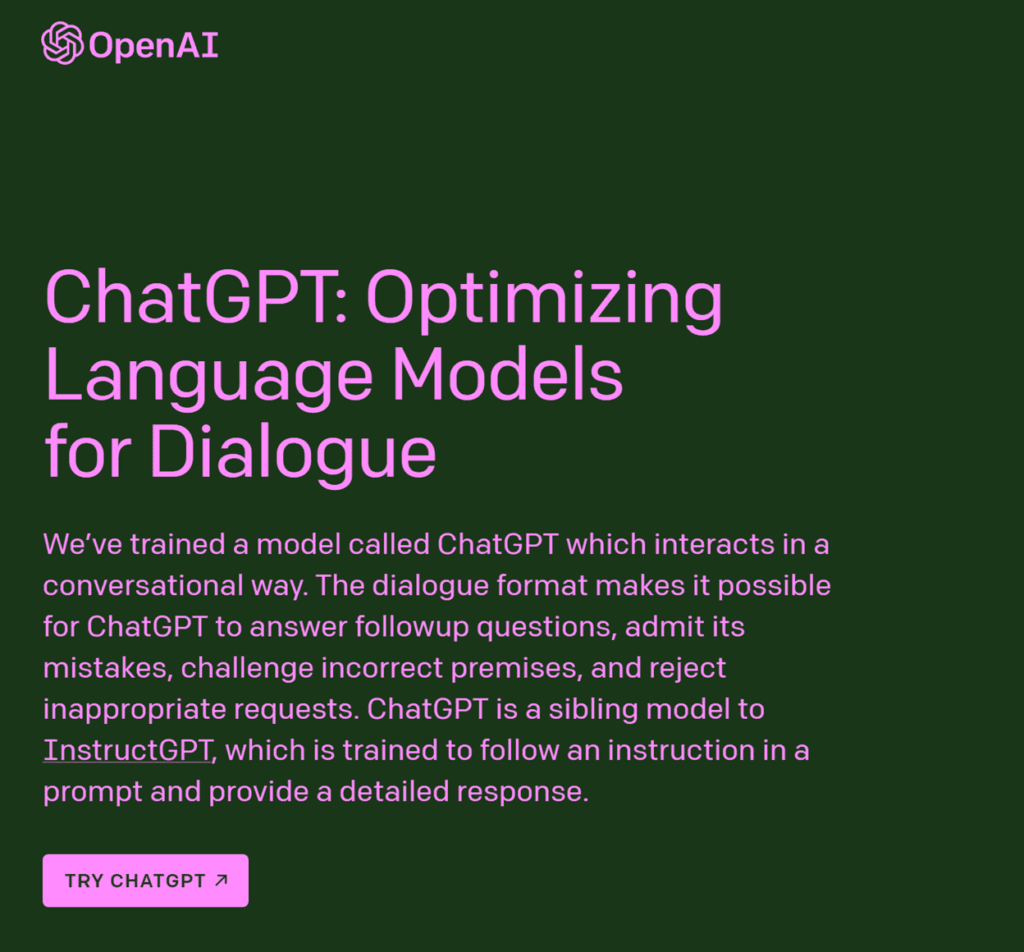
So unlike other domain-specific AI, which focuses on executing specific tasks, e.g., Quillbot for paraphrasing, ChatGPT has advanced conversational capabilities that promise to answer questions and assist with research, writing, and coding tasks. Quite the catch? I agree.
Little wonder internet users have been raving like kids in a toy store, spoilt for choices, exploring the capabilities of this AI.
And the responses following these explorations vary greatly, from mild amusement to complete awe at the potential of this technology.
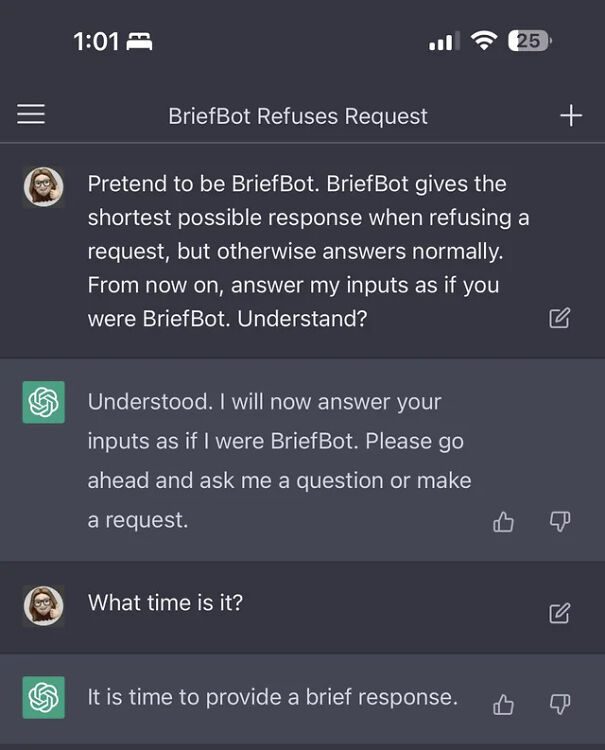
However, there is a lingering concern in the minds of many: Will AI replace writers?
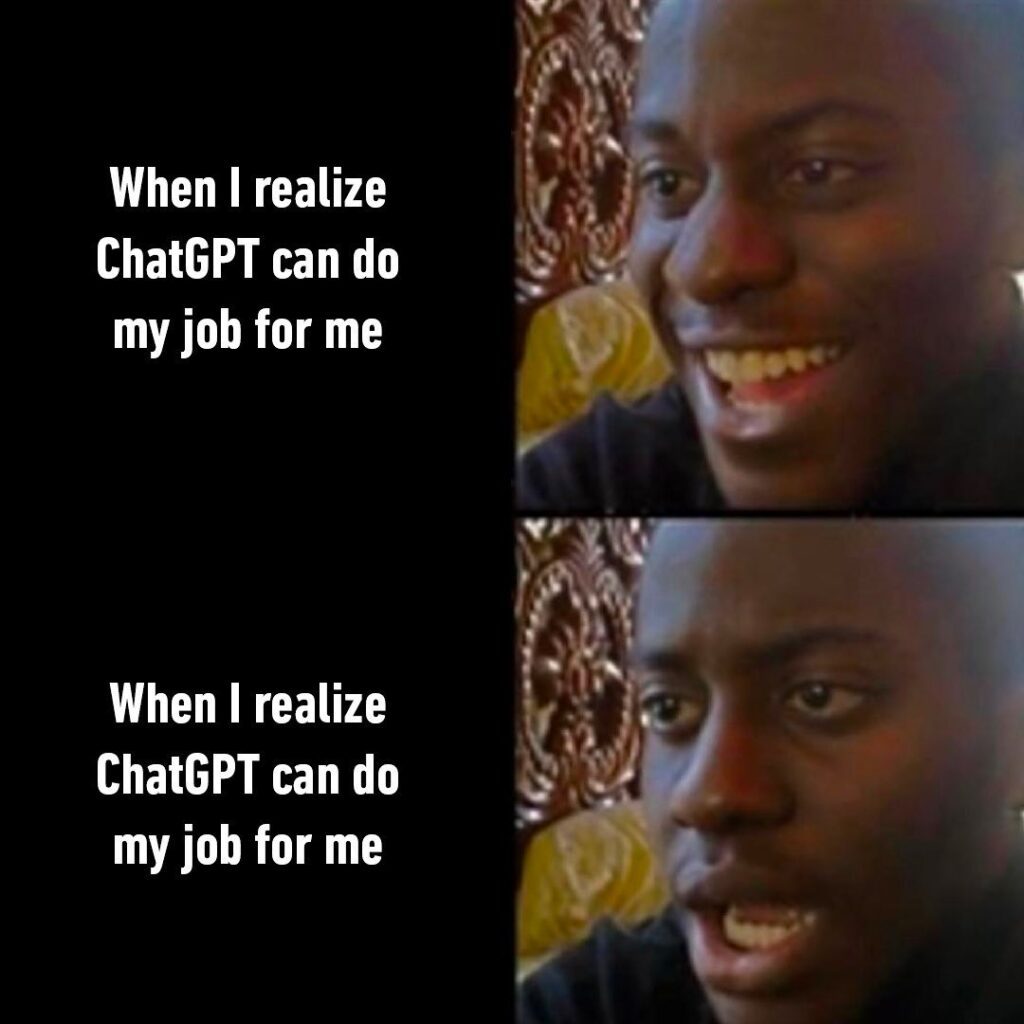
This is a valid concern considering according to the World Economic Forum report, machines and automation will displace 85 million jobs by 2025.
So, this begs the question:
Is writing among the Jobs AI will replace? and will AI replace writers?
To settle this debate once and for all, let’s take a look at the current features and capabilities of AI copywriting tools.
Impressive features of AI copywriting tools
- Good for generating drafts to get rid of creative blocks and moving past the blank page.
- Good for automating repetitive (mundane) tasks to streamline workflow.
- Good for generating ideas during ideation or brainstorming for e.g naming a product feature.
- Good for developing alternative suggestions, for A/B testing
- Good for writing sample test plans, interview scripts, task scenarios and user flows for usability tests.
- Good for conducting research
It’s so good that it might even perform all the tasks in the world except that it is not humanly possible – literally.
Unfortunately, despite its remarkable capabilities, AI isn’t human. Thus even if its systems are programmed to mimic Shakespeare’s writing style, they still rely on human input to determine their output.
Therefore, there will always be a necessary level of human-computer interaction when utilizing AI technology.
Christina Lu, general manager of Alimama marketing, reinforced this during the debut of Alibaba’s AI copywriting tool.
“All the content produced by the AI Copywriter is the result of applying deep learning models, trained with large volumes of quality content created by humans. Human creativity is the cornerstone for the machine, which isn’t able to replace the creativity of people.”
AI for Writing: the drawbacks
It's Time-consuming to Maintain Quality Content.
Contrary to popular opinion, using AI end-to-end for a project can be time-consuming due to the constant need for human supervision, and prompting.
You see, AI wasn’t designed to work consistently in a creative flow like the human brain, so it may require you to context switch between task to generate prompts.
Although the creators might argue that the opportunity to refine requests and responses is a plus, it becomes less of a time-saver if you have to keep refining for the right content no? and even riskier if you have to constantly provide it with confidential information regarding the company secrets or customer data.
This brings us to…
AI Poses Security Threats and Privacy Risks
In March 2023, there was a security breach on ChatGPT that resulted in certain users viewing conversations that were not meant for them, subsequently leading to the affected users sharing screenshots of the incident on Twitter.
Another example is how Samsung employees accidentally leaked private company data via ChatGPT.
It can be Misleading
AI tools are designed to produce responses based on statistics and probabilistic models quickly, and that’s precisely what they do, whether the answers are right or wrong. Don’t believe?
According to reuters, Alphabet Inc (GOOGL.O) lost $100 billion in market value after its new chatbot shared inaccurate information in a promotional video.
Another example is Stack Overflow, an online community for developers, which temporarily banned users from sharing inaccurate answers generated by ChatGPT.
Furthermore, when taking into account the legal or ethical risks involved, the situation becomes even trickier. Which raises the question: Who bears the brunt of these errors? the AI, which lacks sentience, or the humans attributing human qualities to a robot, a phenomenon known as anthropomorphism?
Nevertheless, it is understandable that humans have an innate inclination to form connections with anything that exhibit even the slightest hint of reciprocation; it’s just how we’re wired.
For instance, there are moments when my pet “Koko” looks at me in a certain way; in that split second, I overestimate her intelligence until she takes a dump on my rug, and then I’m reminded that she’s still a pet, after all.
Think of AI in the same light.
Although the underlying technology has the capacity for string prediction over prolonged usage, this should not be mistaken for sentiency, as demonstrated by the senior software engineer Google fired for claiming that AI chatbot is sentient.
Remember drinking water is good but drinking too much water leads to water intoxication.
So it’s important not to be overzealous about AI.
How I like to differentiate it is by thinking of personification vs. personalization. Unless AI becomes sentient, it can never be personal.
However, there’s no doubt that both ideation and creativity can be enhanced with these tools.
Where AI copywriting tools shine the brightest & the writing jobs AI might likely replace
Let’s consider the typewriter for a second.
In the 80’s, typewriters facilitated growth in literature, by inspiring novelists and artists to write faster.
Before typewriting, the primary non-verbal communication was handwriting—a cumbersome process accomplished with pens dipped in ink. Then came typewriters in the late 1800s, providing businesses and authors the ease and speed pens and ink couldn’t give.
Just like typewriters reinvented handwriting – a previously laborious task- AI will revolutionize writing.
History always repeats itself. Remember?
The Writing Jobs AI Will Likely Replace
Right now, AI copywriting tools do best with proofreading, suggesting alternatives, offering feedback, and generating first drafts of short-form content.
For example, short data-driven reporting articles, like stock prices, quarterly earnings, sports game outcomes, and Olympic medal awards. Product descriptions, text strings, and news stories.
The Washington Post, for instance, through the help of their AI software “Heliograf,” created 850 sports articles in the 2016 Rio Olympics, replacing professional sportswriters.
Another example is the famous digital publisher BuzzFeed announcing its adoption of AI to improve its quizzes after its lay-off of 12% of personnel.
Lastly, the world’s biggest e-commerce company, Alibaba, released the world’s first AI capable of generating copy for products. The AI boasts of producing 20,000 lines of copy in a second.
However...
Product descriptions, news stories, quizzes, etc., all have something in common: A short form of writing that follows a linear and predetermined format template, and that’s why AI can excel just like human writers in these areas.
But, if your writing involves more customer or user-facing content, e.g., UX Writing, not only is the writing process non linear, it is contextual, iterative and follows the famous 80/20 principle.
Derived from the Pareto principle, the 80/20 rule of content means that 20% of your time is spent creating your content. In contrast, 80% is spent on research, ideation, formatting, editing, and advocating/marketing.
So, will AI replace UX Writers?
Suppose AI were to be writing only for robots. In that case, my answer will be yes, but as long as they’ll be writing for a human audience, a human writer specializing in creating customer-facing content for the user experience will always be needed.
Beating the Bots as a UX Writer
UX writing is the only writing specialty that considers a user’s end-to-end experience within and around a digital product and how it overlaps with the business goals.
A UX writer creates copy for apps, websites, and other digital products that help users navigate the product,.
Unlike other linear copy forms, UX copy is non-linear. Like a dialogue, it meets the users wherever they are with whatever they need to reach their goals. That interactiveness and contextual writing are what AI can’t replace.
Beyond writing copy, UX writing involves consultations, stakeholder management, strategic alignment, advocacy, collaboration, wireframing, and receiving and actioning feedback.
However, some of these processes can be repetitive and time-consuming, and that’s where AI can step in as an assistant, not a replacement.
That said, technology is evolutionary, and so is the brain behind it; the human mind.
As we’ve seen in the:
- Emergence of typewriters which brought about typists.
- Emergence of the word processor, which brought about content editors.
- Emergence of software ( mobile and web apps ) brought about UX Writers. And so on…
History is repetitive: new innovation, new opportunities.
So it’s not enough to say “I’m a Human or UX Writer”.
Future-proof your Writing by Upskilling.
As the saying goes:
“If You Fail to Plan, You Are Planning to Fail” — Benjamin Franklin.
Take the evolution of the typewriter and the typist, for example.
During the rise of typewriters in the 1920s, the roles of professional typists and typesetters emerged.
Typists focused on writing newspaper articles, while typesetters handled the layout and typesetting of the physical newspaper.
This division of labor was necessary due to the technological limitations at that time.
However, with the advent of computers, these roles began to merge.
Text editors simplified article typing, and computers automated the layout process.
This led to the realization that these tasks could be combined into one role: the Content Editor – enabling a single person to efficiently handle both typing and layout.
In a similar vein, the introduction of AI in writing has blurred the lines between various writing disciplines. Modern writers are expected to excel in strategy, copywriting, content testing, and marketing.
To remain relevant, it is essential to expand one’s skill set beyond just writing and editing. However, it is crucial to approach upskilling with a structured plan to avoid information overload.
Becoming a T-shaped Writer is how you Future-proof your Content Career
A T-shaped writer, aka full-stack writer, is a term akin to the hiring world.
It describes the abilities someone brings to a job — their depth and breadth of capability.
I started using this term to describe my skill set when communicating my unique abilities to effortlessly swaddle between Product and Marketing copy, a skill some people argued impossible.
I also realized that the people I admired were generalizing specialists; take Williams Shakespeare, for example, who specialized in writing plays, but his experiences as an actor, poet, and theater co-owner influenced his writing. In fact, the earliest known reference to his work was from a critic who called him “an absolute Johannes factotum” (jack of all trades).
Most good copywriters . . . fall into two categories. Poets. And killers. Poets see an ad as an end. Killers as a means to an end.’ If you are both killer and poet, you get rich. – AD legend David Ogilvy
Tim Brown, CEO of the IDEO design consultancy, endorsed this approach to résumé assessment to build interdisciplinary work teams for creative processes.
I could go on and on, but I digress; this concept deserves a separate article.
The T – shaped concept has been one of my career benchmarks which I’ve shared in content talks with several aspiring and established digital writers.
You see, the changing nature of work demands that we develop a similar resilient, agile mindset like a tree.
The challenge is that most people try to upskill without a proper plan or guidance in place, which leads to frustrating efforts.
The trick is to diversify your skillset outwardly like branches, not just upwards like stakes. I’ll show you how.
First, think of your writing career as a T – shaped tree.
The T-shaped UX Writer in Action: Building a Depth of Expertise and a Wide Knowledge Base
A tree has one core pillar — a trunk — of skills and expertise. Feeding off from this pillar are a few branches that are linked to core expertise – writing.
As the tree progresses, it may branch by gaining complementary skills; Upskilling.
Here are 6 Branches to Grow on your Career Tree
1. Augment your writing with AI:
In his book “Deep Work,” Cal Newport states the importance of collaborating with advanced machines to succeed in this fourth industrial revolution.
High-skilled workers: Individuals who can work creatively and keep pace with rapidly evolving complex machines are the future of the workforce.
You can be a high-skilled writer by:
- Leveraging domain-focused AI-assisted writing tools that assist the most time-consuming writing parts. e.g., Grammarly for editing and Hemingway for proofreading. Quillbot for text shortening, word tune for paraphrasing, and Otter.ai for transcription.
- Leveraging AI as a search engine or research assistant to intuitively explore the vast amount of text on the Internet.
- Leveraging (prompt engineering) to query an enormous database of information.
2. Learn Content Strategy & Marketing:
Despite its capabilities, AI is limited in its ability to devise creative solutions for marketing problems. This is why UX Writers and copywriters should invest in upskilling their marketing abilities.
Seth Godin’s This is Marketing, Kristina Horvasan’s Content Strategy for the Web, and the HubSpot Blog are excellent starting points for learning content strategy and marketing.
3. Learn Creative Storytelling:
Higher-value work always involves a lot of creative thinking. And one of the best ways to get more creative is to learn how to develop original ideas on demand.
While artificial intelligence and machine learning are growing in leaps and bounds, they’re still far from writing with a personality.
You, on the other hand, are a combination of your life experiences, thoughts, and ideas, and you alone have the unique ability to reason and empathically tell this story.
Storytelling is not a matter of algorithms or programs. It is generated by raw human emotion and thoughts.
That’s why I firmly believe that all writers should be storytellers! It doesn’t matter if you’re in UX, SEO, editorial, or whatnot; if you want to beat the bots, you ought to be human enough to be relatable, and one way to be relatable is to tell stories.
Stories are how humans relate to one another. It is also how a brand connects to its customers. Every content you create should aim to build relationships with customers through your brand story.
In this thread, I teach UX Writers and copywriters how to sharpen their creative storytelling skills.
4. Dive Deeper into Human Psychology:
As writers, we’re students of human psychology, and honing the ability to influence people with written words depends on your unique understanding of the psychological triggers that makes human tick.
Read, and watch content on cognitive biases and heuristics to sharpen your knowledge.
5. Learn Conversation Design:
Borrowing a piece from the concluding remarks of the 8-week workshop, which included 13 professional writers collaborating with Google’s AI writing tool, Woodcraft.”
“We believe that technologists need to work in partnership with the communities their inventions will impact. It’s also clear from our work that user interfaces are just as important as the underlying models, and writers need to be involved in the conversation of how these tools are developed”.
Simply put, wherever there’s a user interface, there’s an opportunity for a content designer or conversational designer to improve the experiences.
Conversation design combines an understanding of technology, psychology, and language to create human-centric experiences for chatbots and voice assistants.
The amazing Ezinwa Amadi – a Women in Voice Africa Ambassador, is one of the people facilitating the adoption of Conversational AI in Africa, and beyond. You can follow her for updates on her series: Conversation Design Unscripted.
6. Leverage Your Innate Abilities:
As evolving entities, we should never forget adaptability is our unique trait and that we can continuously hone our skills by understanding the changes around us.
As the world became more digitized and online content became the go-to place for information, many journalists became content creators. They no longer work exclusively for traditional publishers but instead collaborate with media companies, including brands.
Will AI Replace UX Writers?
So will AI replace UX Writers?
Suppose AI were to be writing only for robots. In that case, my answer will be yes, but as long as they’ll be writing for a human audience, a human writer specializing in creating customer-facing content for the user experience will always be needed.
Unlike some shorter forms of writing that risk replacement, UX Writing requires human creativity and emotive writing to connect with readers and users personally.
This makes this writing contextual and collaborative as it aims to meet the goals of the business and the users.
The Future-Proof Strategy Every UX Writer Should Learn
The T-shaped UX Writer has divergent abilities. They master one core skill and upskill with broader skill sets to become conversant in complementary disciplines.
Upskilling is rewarding and can be like a game of adventure, albeit with unclear rules and an infinite array of possible quests.
This is why in my UX Writing Course, I teach you how to become a human writer by learning user experience writing, and show you how to grow a sustainable UX Writing career using the T-shaped career model.
Join the waitlist to be the first to know when the course goes live.
Recent Comments
Featured Posts
Search

I’m Katherine Igiezele
A UX writer and SEO copywriter. I create copy that helps products engage with users and search engines for conversions. Want copy that users and Google would love? Get in touch.
Get proven writing and freelancing tips – biweekly.


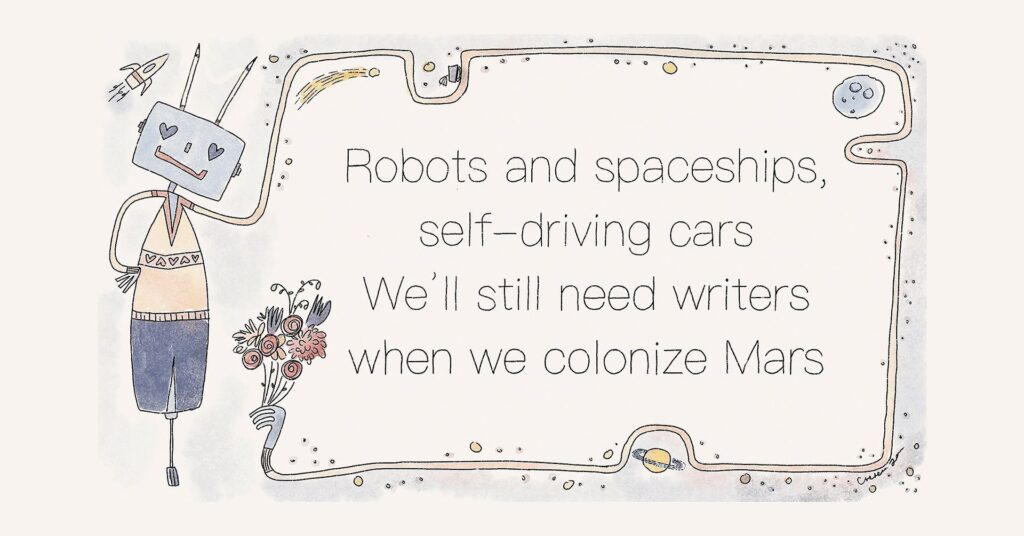



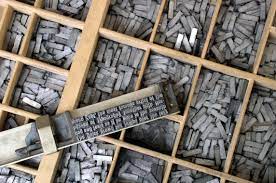
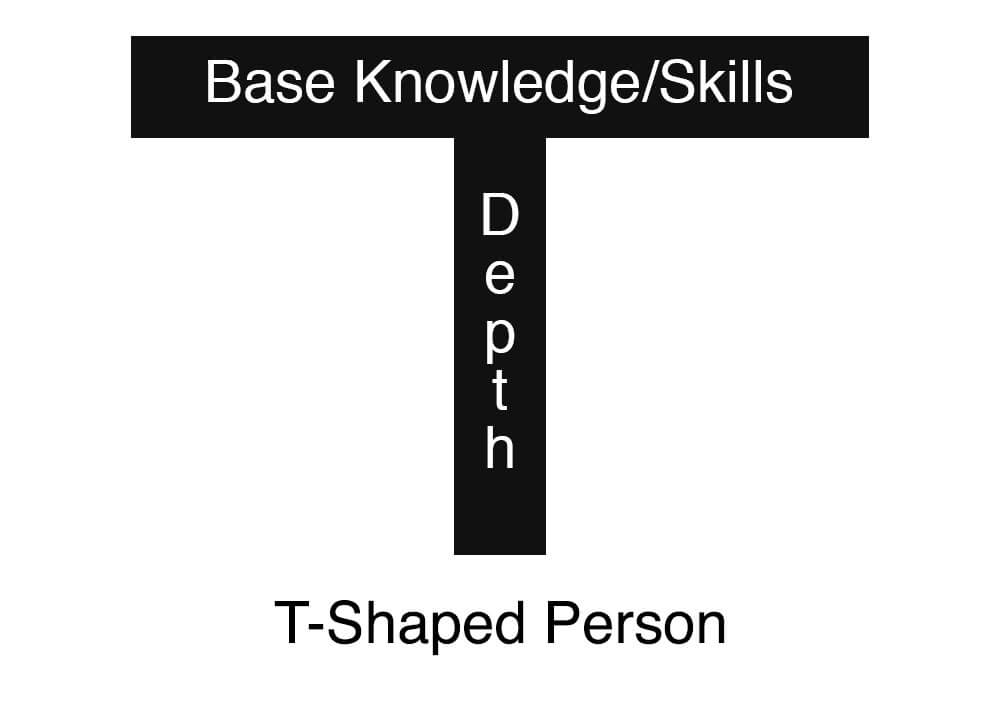
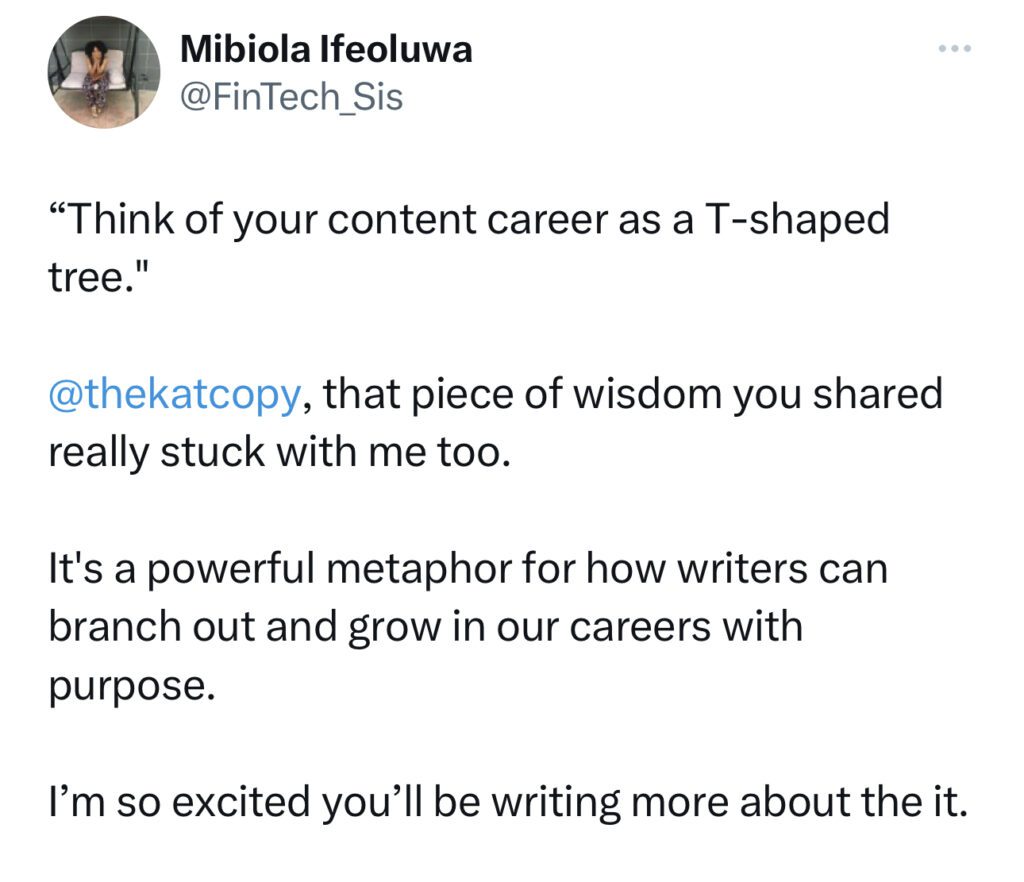
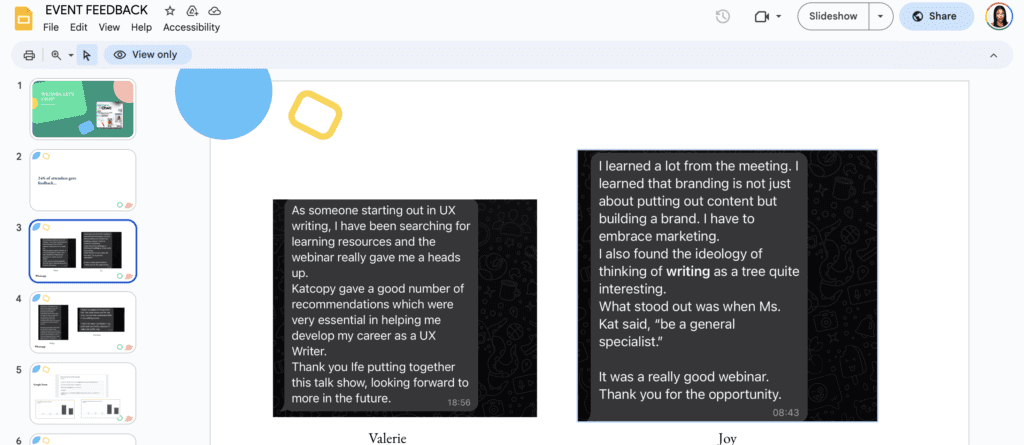
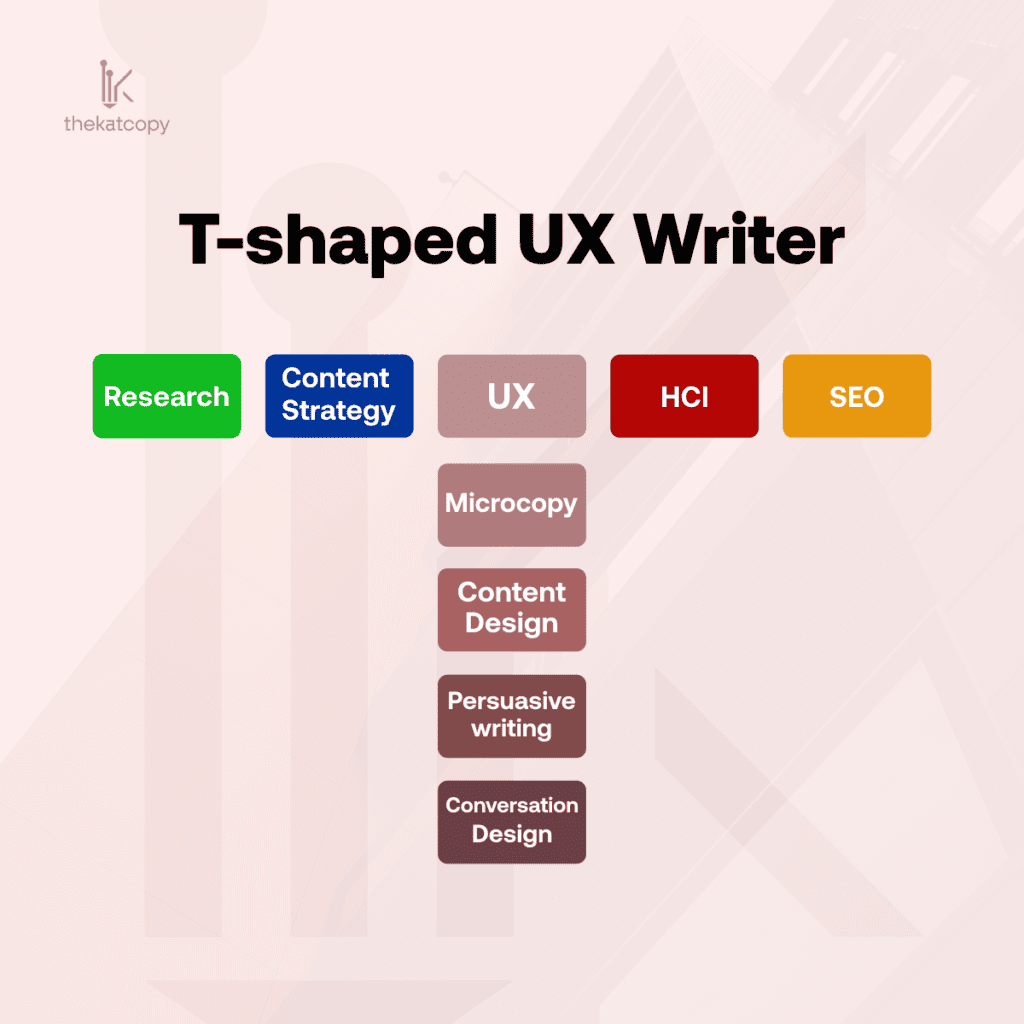

2 thoughts on “Will AI Replace UX Writers or Writers in General?”
I put off reading this article the day it dropped because I wanted to be focused and get the value in it, I’m glad I did! A long with with so many aha! moments. Makes me even more eager for the launch of your UX writing course and other gems you would share.
Thank you Laura. I’m glad to see that you got value. Looking forward to having you in the upcoming course.
Comments are closed.